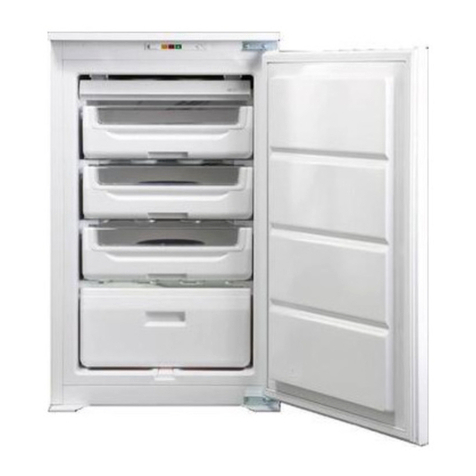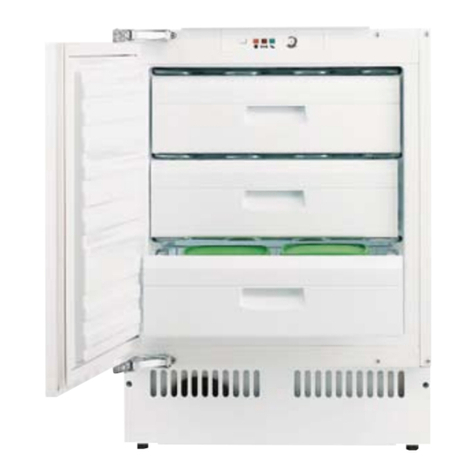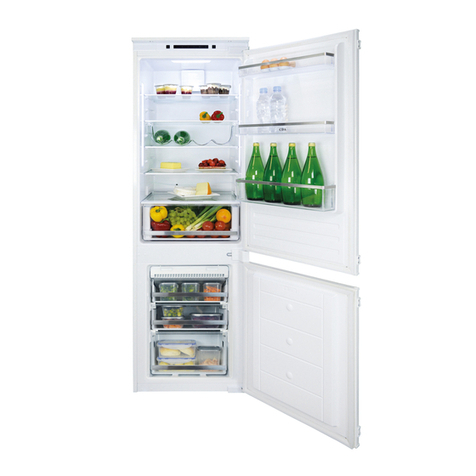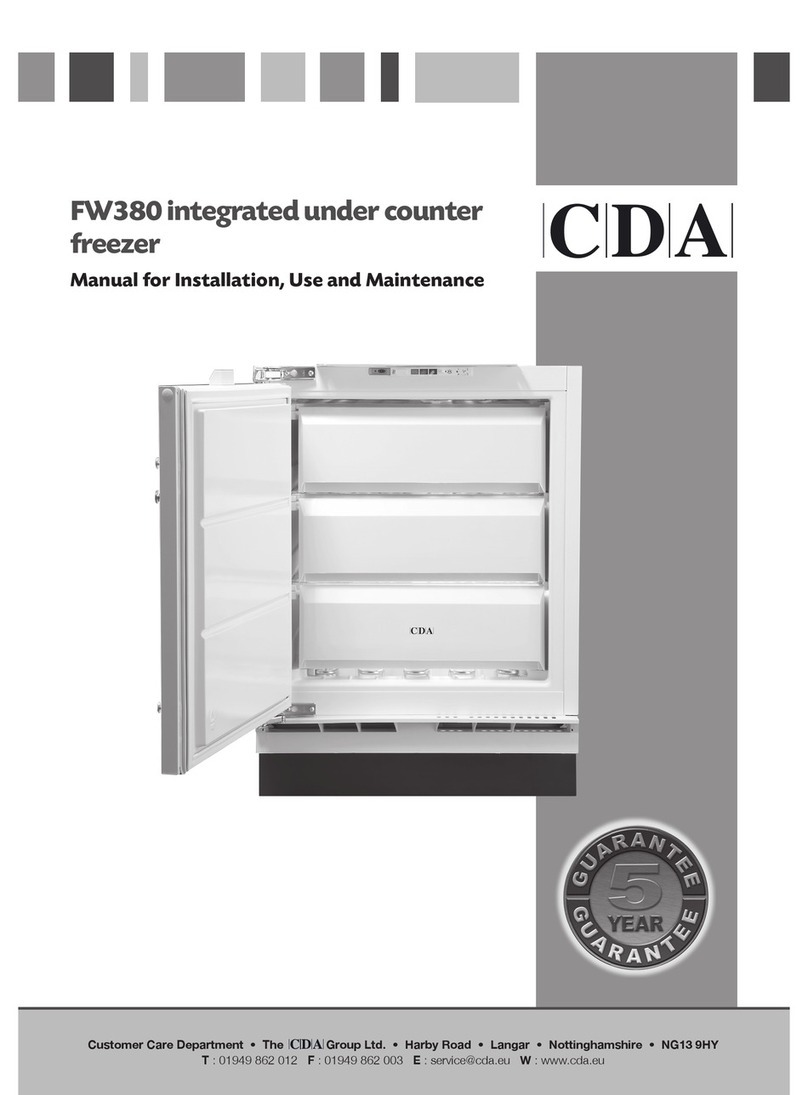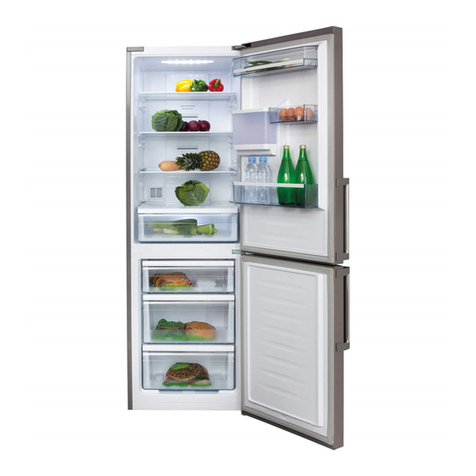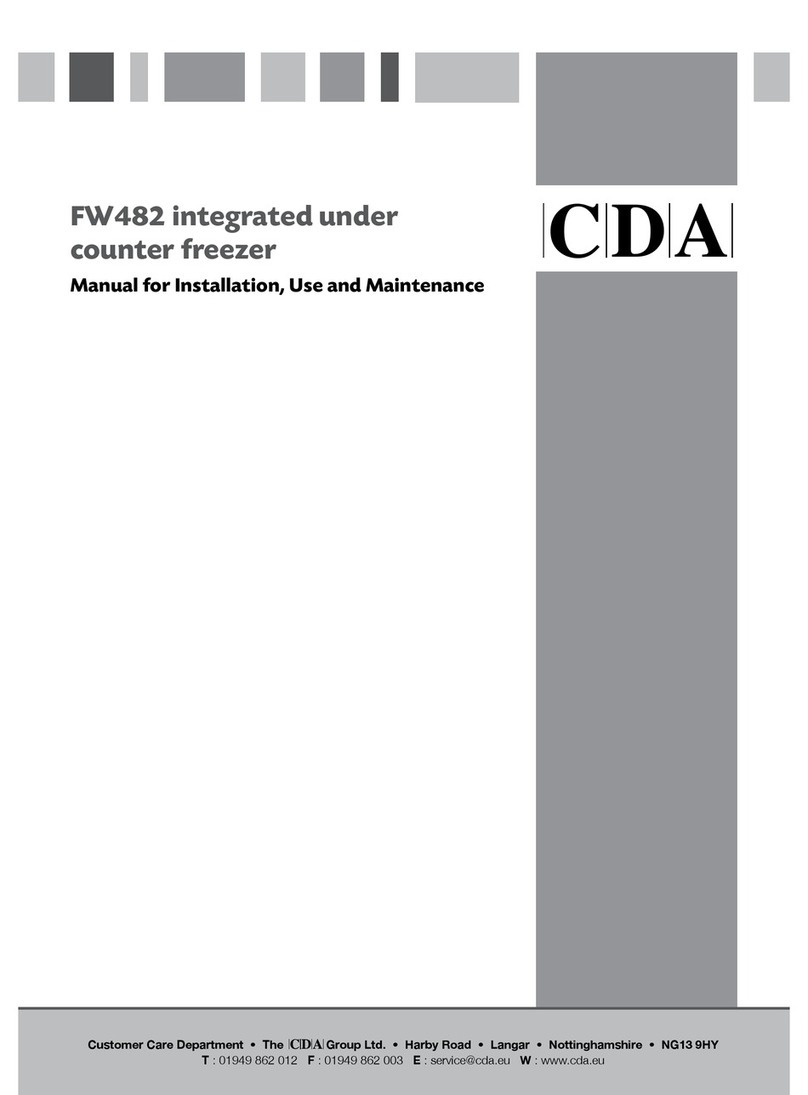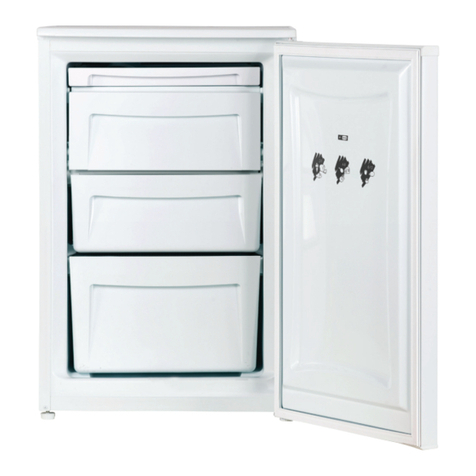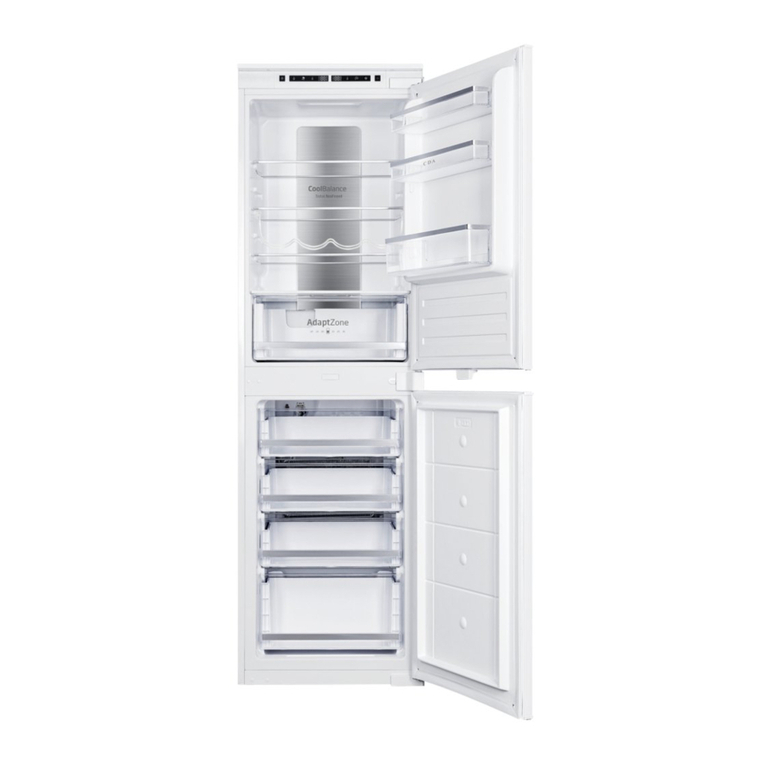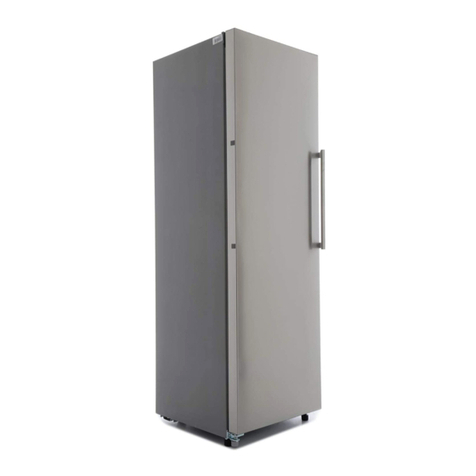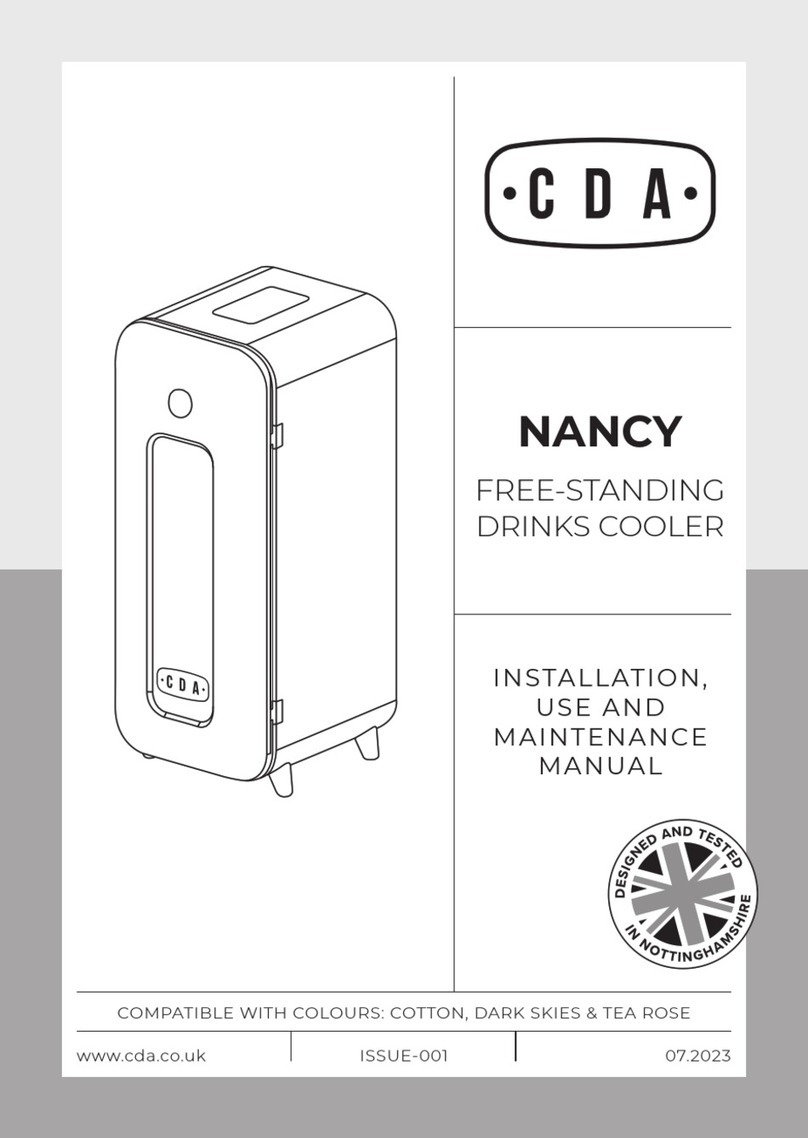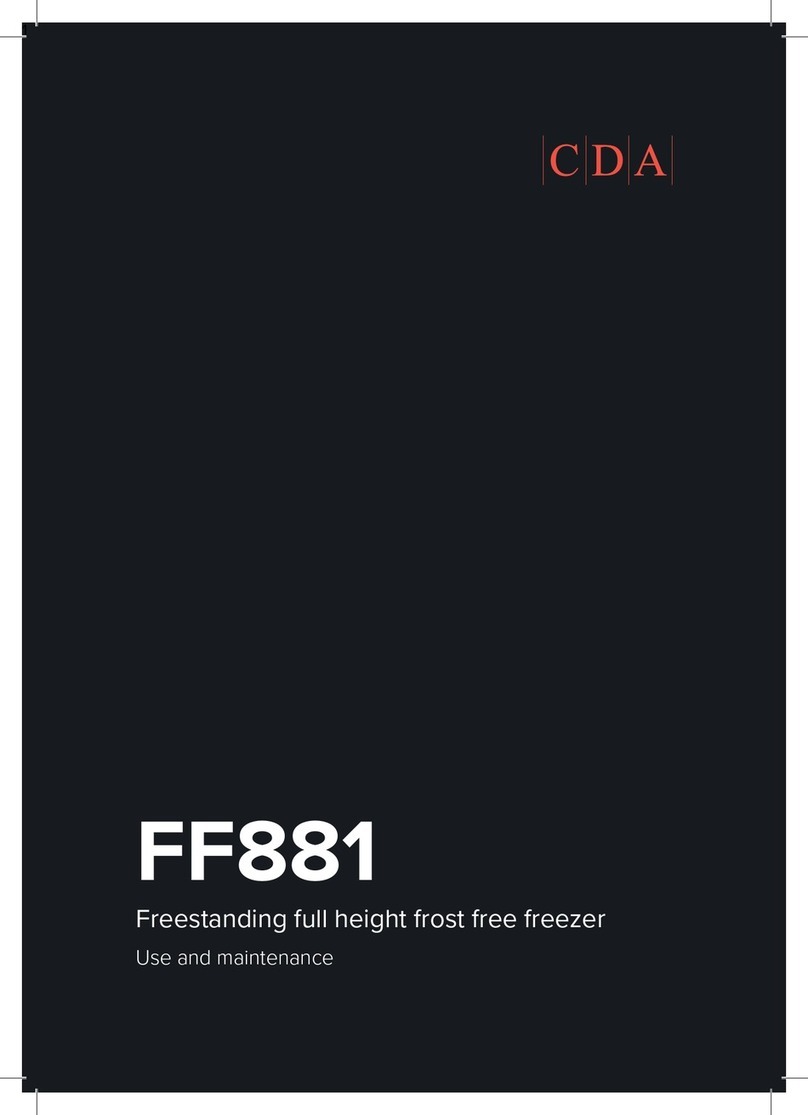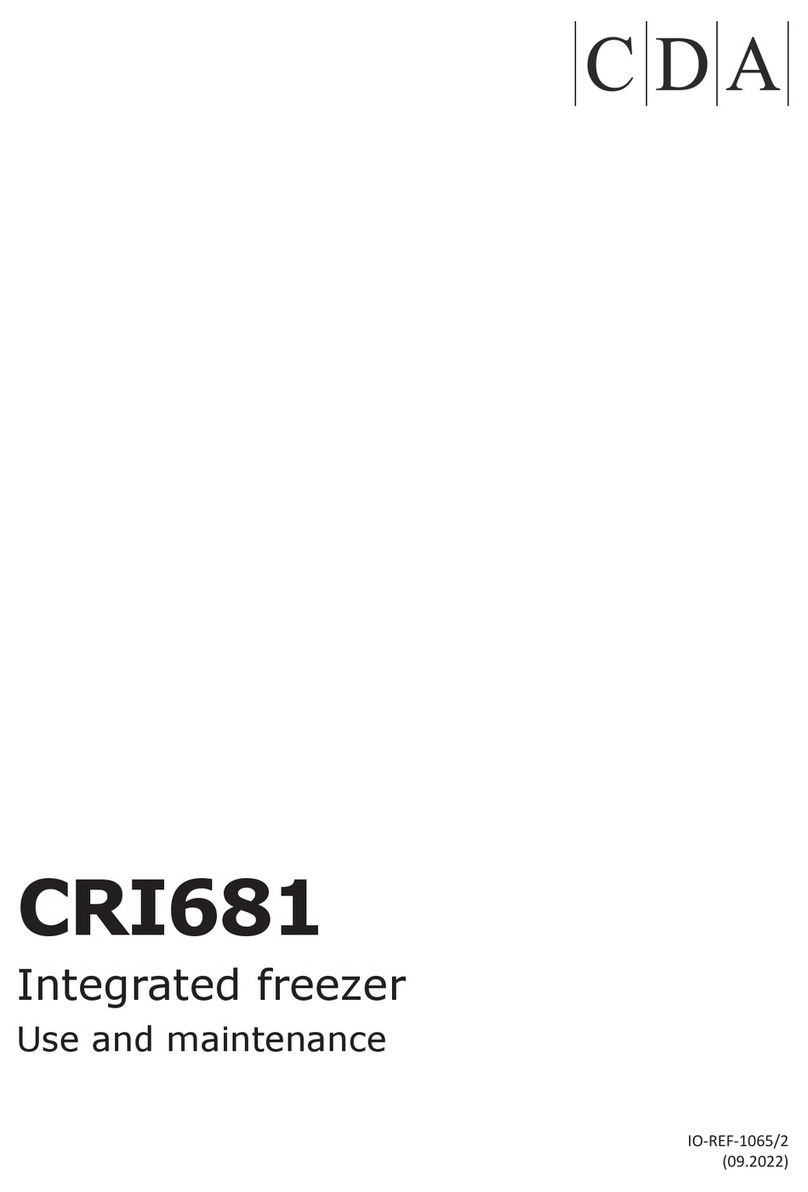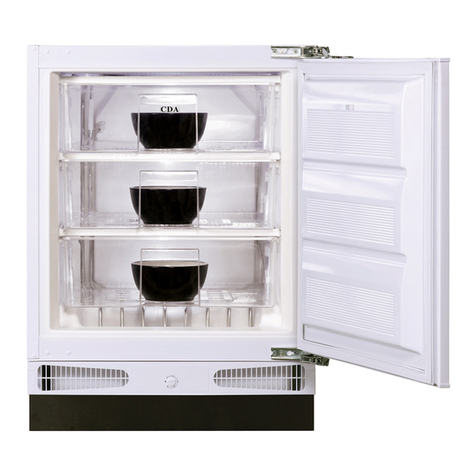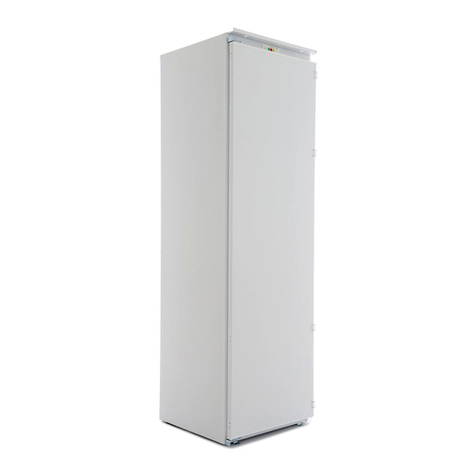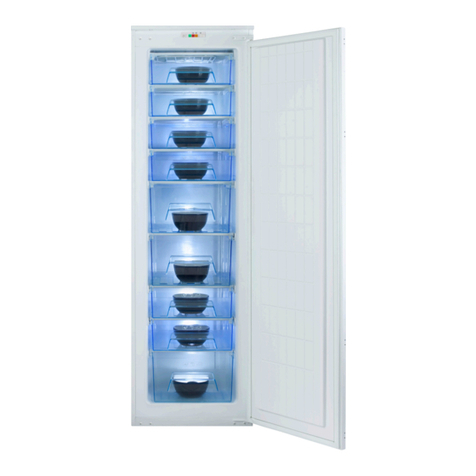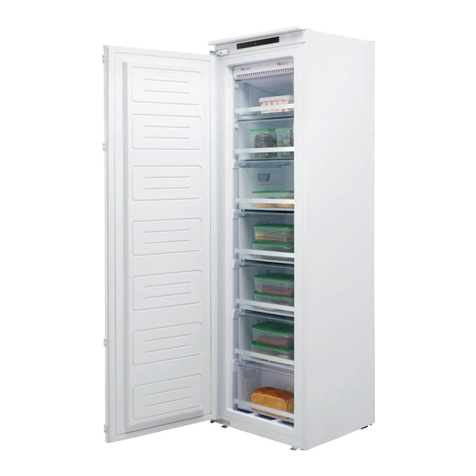
6
Use
Freezer
• The freezer compartments are designed to store only frozen food.
• Never put hot or warm foods in the freezer, allow them to cool fully
before putting them into the freezer.
• Follow the instructions on the food packaging for storage of frozen
food. If no information is provided, foods should not be stored for
more than three months after the purchase date.
• Store food in small packages (ideally less than 2.5kg). This reduces
the freezing time and improves the quality of the food after thawing.
• Wrap food before putting into the freezer. To stop the wrapping
sticking together, ensure it is dry.
• Label the food before freezing with information including type of
food and dates of storage and expiry.
• Once food is thawed, it must not be refrozen unless it has been
completely cooked. Only defrost as much food as is required, to
prevent wastage.
• Bottled or canned drinks should not be stored in the freezer
compartments as they could explode.
• Check the rating plate to confirm the maximum amount of fresh food
that can be frozen within a 24 hour period.
• Do not attempt to freeze more than the maximum amount.
• To freeze fresh food more quickly, switch the dial to setting 5 a few
hours prior to placing the food in the freezer.
Note: If the appliance does not have a freezer compartment ( ) it
is not suitable for freezing foodstus.

